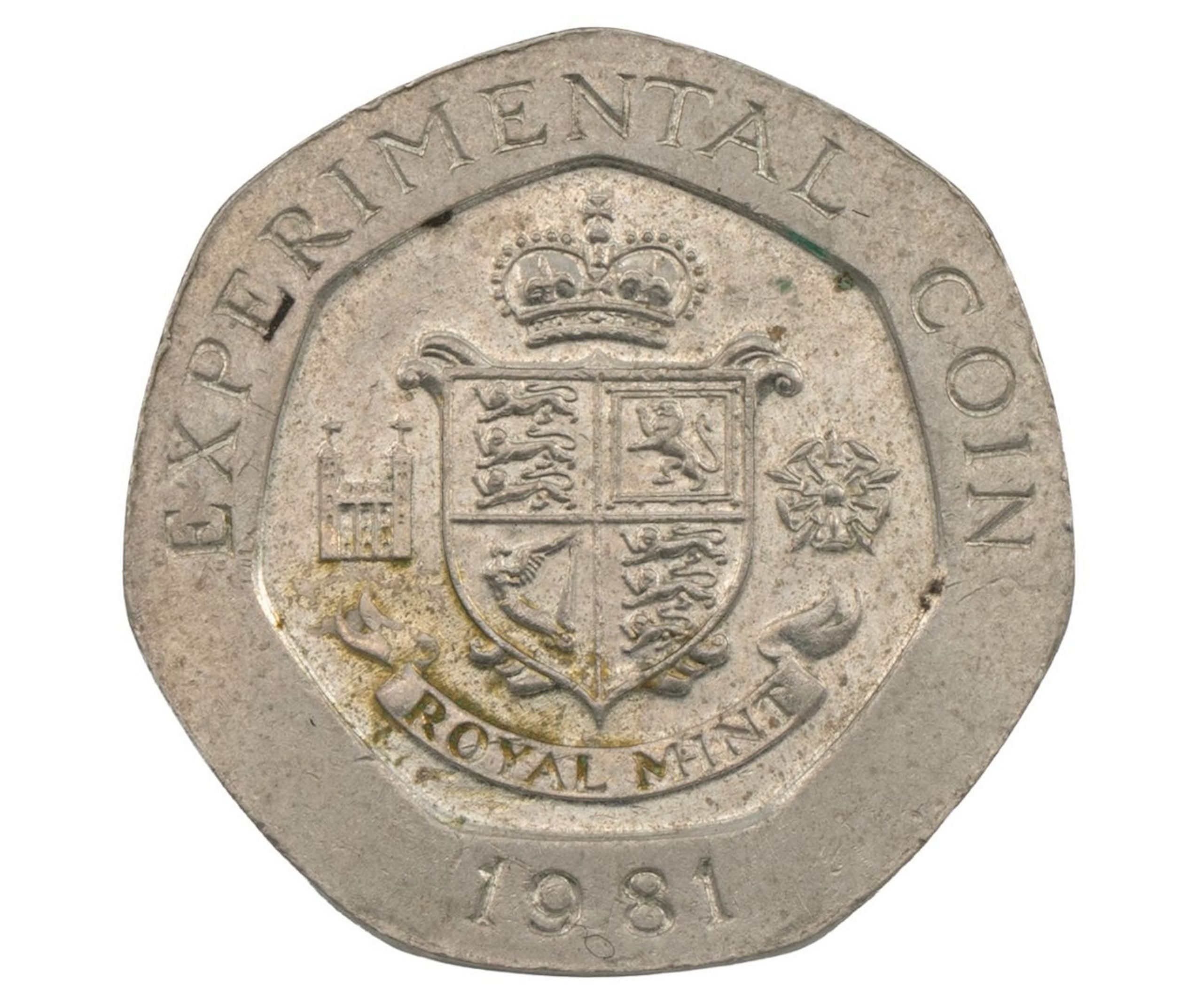
A very rare experimental 25 pence British coin from 1981 that looks at first glance like an ordinary 20 pence example has sold at auction for some 6,800 times its face value. Estimated at £500 to £700 ($670 to $938), it sold for some £1,700 ($2,278), at RWB Auctions, in Swindon, in the southern U.K.
“While these experimental coins were not intended for circulation, the vendor received this coin in his change some years ago,” said Kimberly Day of the auctioneer’s coin department, in an email. “Given the similarity of the design to standard U.K. currency, it was a lucky find, which has now generated him a very significant profit.”
The coin is what’s known as a trial piece, produced before a new design or denomination is introduced. Mints make these pieces to test how the new items will perform in cash counting machines, vending machines and similar settings. They are also sometimes created to demonstrate a new royal portrait or other new design before formal approval. Mints might create several variants before going into full production.
Only a small number of trial coins are typically minted at all; even fewer make their way into the pockets of collectors. This particular item is suspected to number fewer than 50, and the nickel brass alloy variety, of which this is one, are yet rarer—only a handful have come to market, the latest in 2020.
Courtesy RWB Auctions.
A close look would easily reveal that the coin is an unusual item. It is in a seven-sided shape, known as an “equilateral curve heptagon,” and on one side it shows the Royal Mint’s logo, a shield topped by a crown, with the words “experimental coin” along the top four sides and the year on the bottom. The reverse shows the Sovereign’s Orb at center with the words “Royal Mint trial” at the top and national flower emblems below.
Despite its official source, the reasons for making this particular coin are lost to history, said the house, which offered two schools of thought. In the early 1980s, inflation had devalued the 10p and 5p coins, so it may have been planned to fill the gap between those and the 50p coin that had come on the scene in 1969, shortly before the U.K. went to an all-decimal system. Or, despite the 1981 date stamped in the metal, it’s possible that this piece was minted between 1994 and 1996, as the U.K. considered replacing the pound with the euro.
Day pointed out that the auction house opened only in February, but has handled the sales of a number of scarce U.K. and international coins, urging everyday people to take a close look at the currency they carry around.
“Coins that look ordinary at first glance but hold hidden value capture the imagination and encourage us to check the coins in our pockets,” said Day. “This piece has the added appeal of revealing the processes behind how our money is designed and manufactured.”